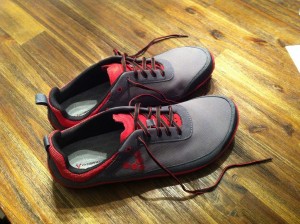Now the time has come. I'll try barefoot running shoes in the transition period. The shoes come without any cushioning and only have a rubber sole. If you approach slowly, you come back step by step to a natural running style that is significantly more forefoot and metatarsal than the often observed heel run. The latter is particularly favored by the use of excessive cushioning in shoes. This also ensures that the muscles involved in running are relieved of work. Ultimately, the heel runs more stress on the joints and tendons and is also even slower due to the lower rolling speed.
In contrast to this, running forefoot and metatarsus is of course much more demanding for the muscles and especially for the calf. But muscles, unlike ligaments and tendons, can be trained and strengthened. Ultimately, this way, one can avoid many of the typical runner injuries that occur as a result of poor running style.
Here is a interesting article about the Tarahumara Indians from Mexicowho traditionally only know running as a form of locomotion, even over hundreds of kilometers, and walk barefoot or only with sandals.
For us, the barefoot running shoes are still not training shoes for everyday use, but should only be used in short runs in the forest, especially at the beginning. They are particularly suitable for cross-country runs. I wouldn't run it on asphalt due to the low damping. In addition, you shouldn't go straight from 100 to 0 if, for example, you have only been walking with heavily cushioned shoes. In that case, try out lightweight shoes first. Relatively heavy athletes should also approach slowly and not run completely without cushioning.
For years I have only been running neutral lightweight trainers or competition shoes. Therefore, the step to barefoot running shoes is probably not that big anymore.
I report how the first units felt.
stay tuned!
krelli
PS: Of course, socks can still be worn in the shoes, even if the name suggests otherwise 😉


